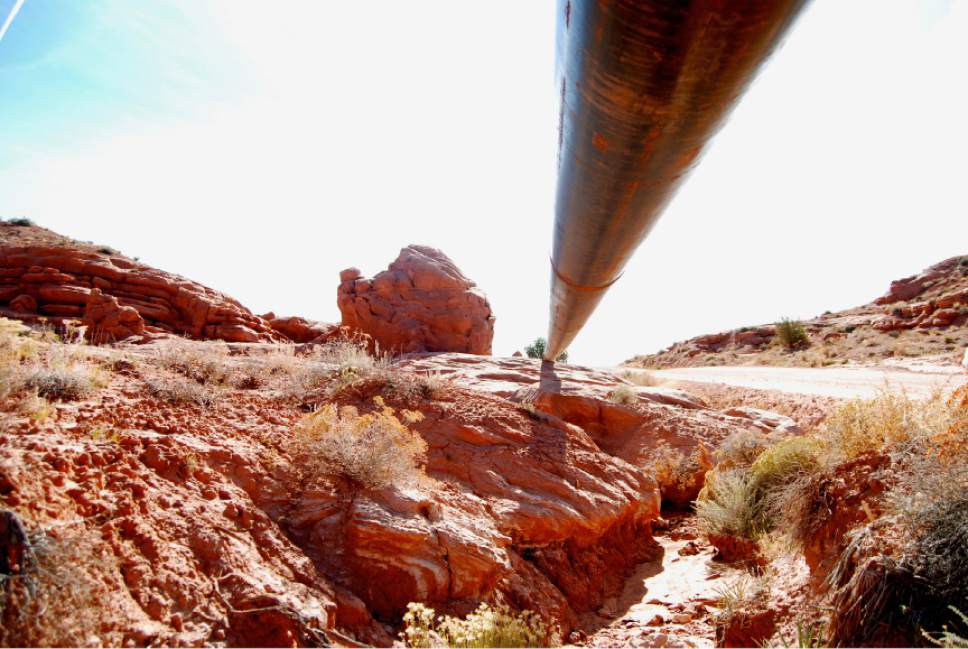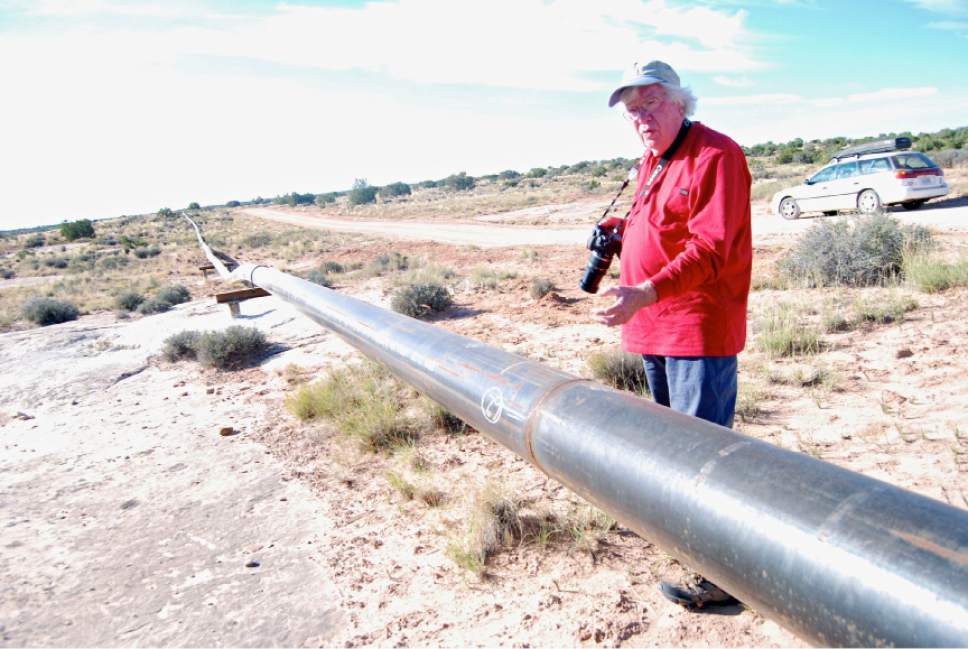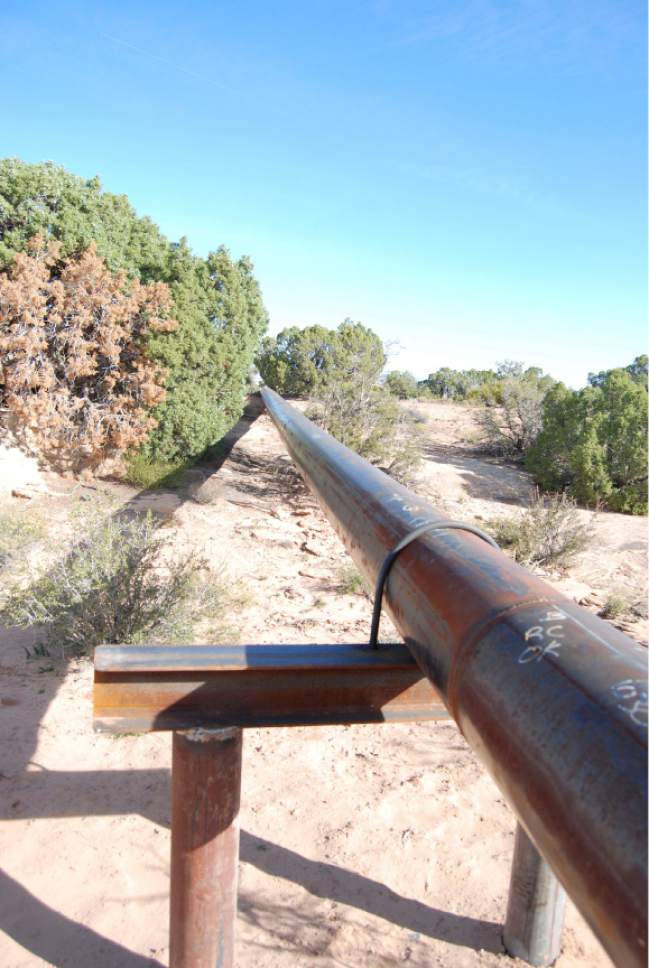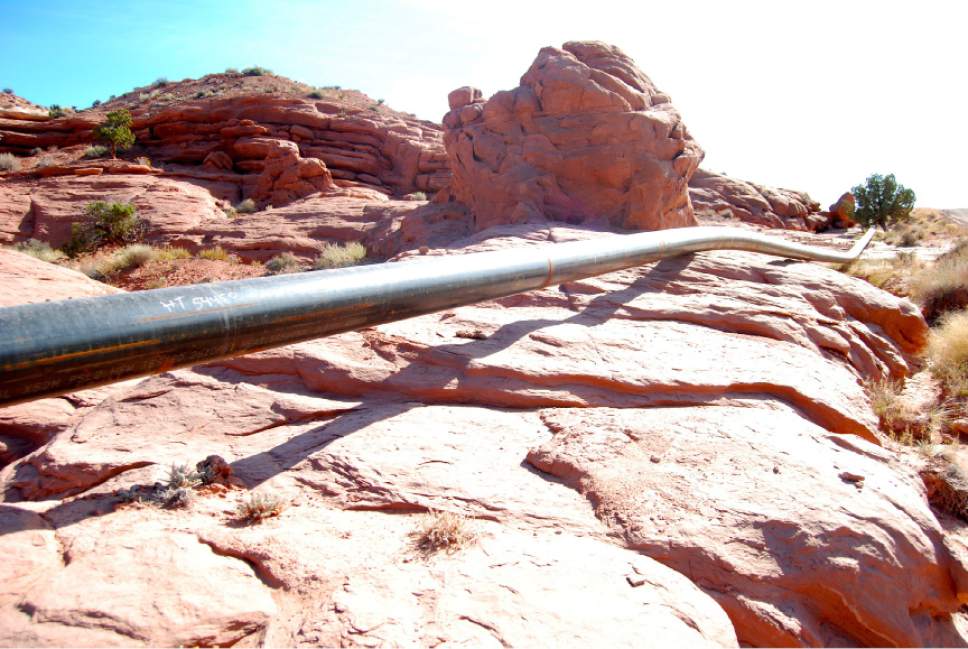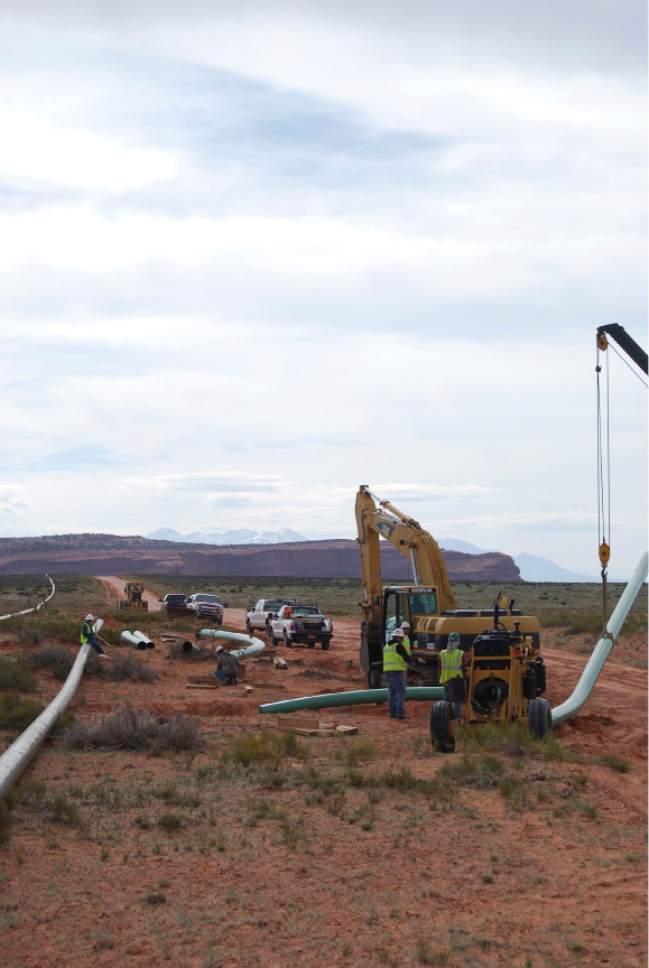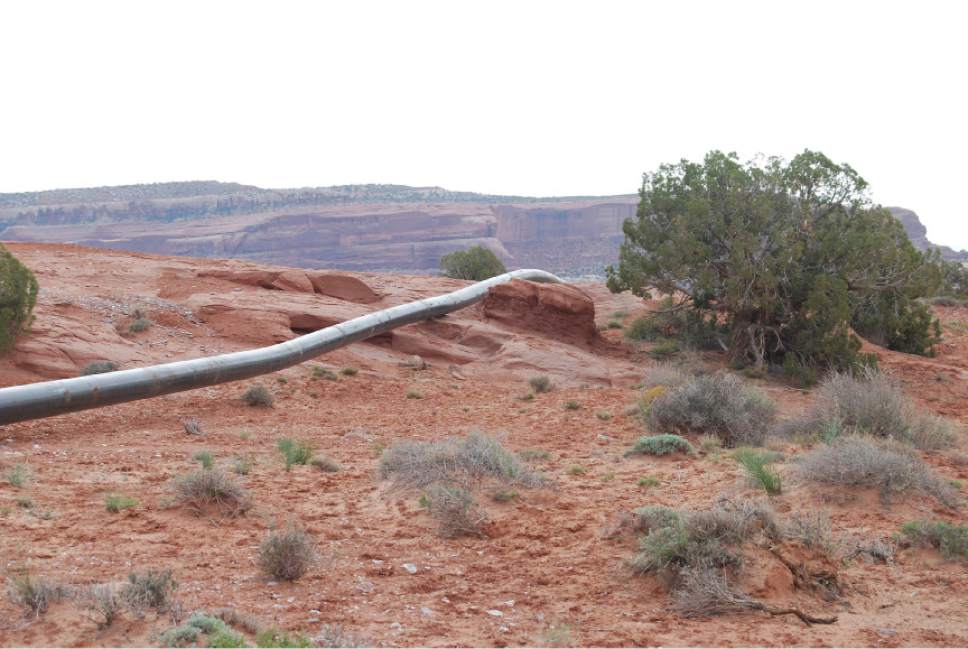This is an archived article that was published on sltrib.com in 2014, and information in the article may be outdated. It is provided only for personal research purposes and may not be reprinted.
The Bureau of Land Management should stop the expansion of a rapidly growing oil and gas field near Moab until a broad environmental review can assess its impact on scenic Big Flat, an area vital to Grand County's tourist economy, environmentalists argue.
Fidelity Exploration and Production Co. has completed a 25-mile trunk line to serve its productive Cane Creek oil wells. Last month, the BLM approved 19 additional small-diameter gathering lines to connect well pads with the trunk line, known as the Dead Horse Lateral, or DHL — named for the famous state park nearby.
But the Sierra Club and the Southern Utah Wilderness Alliance want BLM Utah director Juan Palma to rescind that decision. In a protest filed Friday, they criticized the agency's "piecemeal" review of the 26-mile gathering network and other components of the field.
As a result of poor planning, argues Sierra Club staff attorney Devorah Ancel, a beautiful part of Utah is undergoing rapid industrialization without a meaningful disclosure of the field's impacts. The BLM should severely limit Fidelity's operations on Big Flat, she said, and complete an environmental impact statement.
The agency "needs to take a step back and evaluate the full scope of impacts of this entire infrastructure project, which includes the pipeline already built, the subject gathering line, existing wells and future wells," Ancel said.
BLM officials, however, have said that when Fidelity began developing its interest on Big Flat in 2011, its operations were exploratory and geological data were not available to warrant a full environmental review of impacts that may never occur.
Today, the field's crude production, up to 3,500 barrels a day, is trucked out. But natural gas is being burned or "flared" at the wellheads, at a rate of about 2 million cubic feet a day. Utah regulators are insisting Fidelity build the network of gathering lines to harvest the resource, rather than wasting it.
"It's a tricky point because flaring isn't ideal," said Landon Newell, a lawyer with SUWA. "We aren't challenging the flaring. It's that BLM has unlawfully segmented its analysis."
BLM spokeswoman Megan Crandall declined to comment on the protest while it remains pending. But she explained the BLM is committed to responsible energy development on Utah's public lands.
"Our work to ensure that development occurs in the right places and in the right ways includes efforts to mitigate air quality impacts when possible," she said. "Pipelines and rural gathering system projects provide us with opportunities to minimize gas flaring, which can contribute to improved air quality in Utah and also prevent waste of an important natural resource."
SUWA has argued in the past that Fidelity should slow production so that its flaring would remain within the legal limit. But the Division of Oil, Gas and Mining, which regulates flaring, decided "choking back" Cane Creek's output would damage the wells and waste oil and gas.
Noting that the gathering lines will mitigate the field's air quality impacts, Fidelity officials expressed "disbelief" that environmental groups would pick a fight with the BLM "over simple procedural issues." The project complies with regulations and underwent a "robust NEPA [National Environmental Policy Act] process," said Tim Rasmussen, Fidelity's spokesman.
The protest is "unfortunate and unfair" to Grand County residents, he said, because it may "limit their ability to seize the advantages of increased tax revenues and general business development in the area."
Fidelity's corporate parent, MDU Resources Group, on Tuesday announced plans to sell the company, citing the investments required to ensure Fidelity's continued growth. Those financial demands "would compromise our ability to fund the substantial opportunities we are seeing at our other lines of business," CEO David L. Goodin said in a news release. "We expect to grow our utility, pipeline and construction business units in a more meaningful way and pursue that growth with a lower overall business-risk profile."
The whole pipeline project is expected to cost $70 million. The l2-inch lateral lines, completed last spring, run along State Route 313, the scenic byway leading to Dead Horse State Park, its spur road leading to Canyonlands National Park's Island in the Sky, and along Dubinky Well Road.
Pipe rests directly on sandstone in places and spans washes for up to 80 feet with no supports. Local Sierra Club activists fear this line was not built to appropriate safety standards, while Fidelity officials assure that it is more than adequate.
Some 500,000 people pass through the area every year to visit parks and many others come to camp, bike and hike on adjacent BLM lands that include scenic gems such as Gemini Bridges and Hell Roaring Canyon.
Fidelity is now producing from about two dozen wells here and BLM foresees 77 wells eventually tapping this 100-square-mile field. Just in the last two years, Fidelity has filed 37 applications to drill here, according to Newell.
Development on this scale "will aesthetically and physically scar the natural landscape as they weave an approximately fifty-mile industrial web of pipes, metal, and roads through this frequently visited area," the groups wrote in the appeal. "The Greater Canyonlands area which includes lands at issue in this appeal is a place of cliff, canyon and valley, of spire and castle, of lush and improbable hanging gardens, of echoing alcoves and amphitheaters."
Such a landscape speaks to a need for the most careful analysis possible, not the uncoordinated series of reviews that occurred, the groups say. The BLM should have at least analyzed the two phases of the pipeline network as one project, since they "do not have independent utility but rather are completely and entirely dependent on each other," their protest said.


